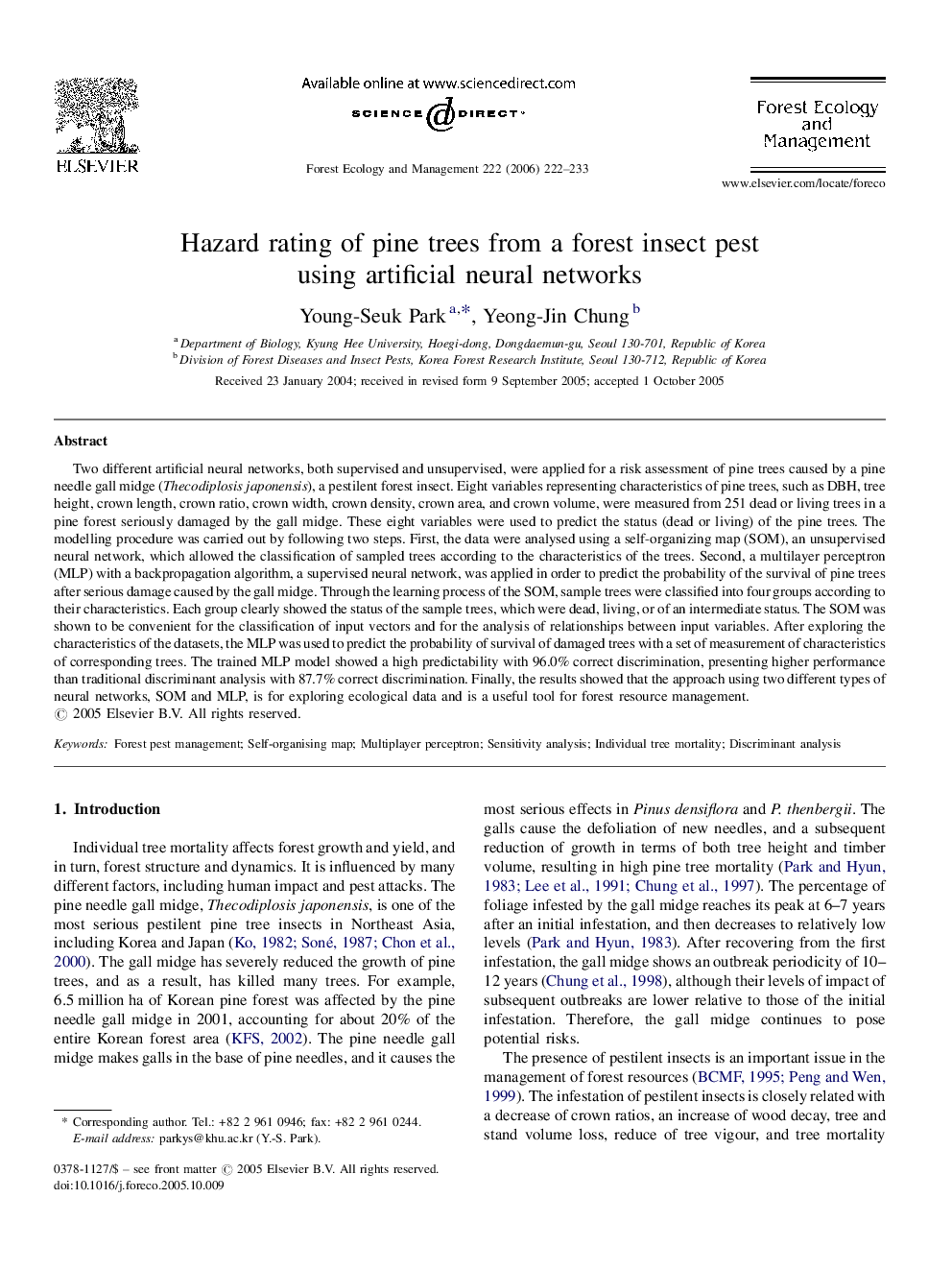| کد مقاله | کد نشریه | سال انتشار | مقاله انگلیسی | نسخه تمام متن |
|---|---|---|---|---|
| 90714 | 159392 | 2006 | 12 صفحه PDF | دانلود رایگان |
عنوان انگلیسی مقاله ISI
Hazard rating of pine trees from a forest insect pest using artificial neural networks
دانلود مقاله + سفارش ترجمه
دانلود مقاله ISI انگلیسی
رایگان برای ایرانیان
کلمات کلیدی
موضوعات مرتبط
علوم زیستی و بیوفناوری
علوم کشاورزی و بیولوژیک
بوم شناسی، تکامل، رفتار و سامانه شناسی
پیش نمایش صفحه اول مقاله

چکیده انگلیسی
Two different artificial neural networks, both supervised and unsupervised, were applied for a risk assessment of pine trees caused by a pine needle gall midge (Thecodiplosis japonensis), a pestilent forest insect. Eight variables representing characteristics of pine trees, such as DBH, tree height, crown length, crown ratio, crown width, crown density, crown area, and crown volume, were measured from 251 dead or living trees in a pine forest seriously damaged by the gall midge. These eight variables were used to predict the status (dead or living) of the pine trees. The modelling procedure was carried out by following two steps. First, the data were analysed using a self-organizing map (SOM), an unsupervised neural network, which allowed the classification of sampled trees according to the characteristics of the trees. Second, a multilayer perceptron (MLP) with a backpropagation algorithm, a supervised neural network, was applied in order to predict the probability of the survival of pine trees after serious damage caused by the gall midge. Through the learning process of the SOM, sample trees were classified into four groups according to their characteristics. Each group clearly showed the status of the sample trees, which were dead, living, or of an intermediate status. The SOM was shown to be convenient for the classification of input vectors and for the analysis of relationships between input variables. After exploring the characteristics of the datasets, the MLP was used to predict the probability of survival of damaged trees with a set of measurement of characteristics of corresponding trees. The trained MLP model showed a high predictability with 96.0% correct discrimination, presenting higher performance than traditional discriminant analysis with 87.7% correct discrimination. Finally, the results showed that the approach using two different types of neural networks, SOM and MLP, is for exploring ecological data and is a useful tool for forest resource management.
ناشر
Database: Elsevier - ScienceDirect (ساینس دایرکت)
Journal: Forest Ecology and Management - Volume 222, Issues 1â3, 15 February 2006, Pages 222-233
Journal: Forest Ecology and Management - Volume 222, Issues 1â3, 15 February 2006, Pages 222-233
نویسندگان
Young-Seuk Park, Yeong-Jin Chung,